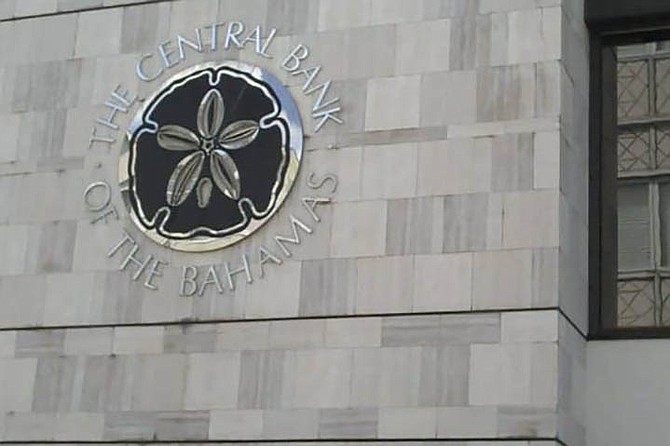• Top banker warns of 5-7 year recovery
• October rise ‘neither start nor the end’
• Every payment missed adds 3 months
By NEIL HARTNELL
Tribune Business Editor
nhartnell@tribunemedia.net
MORTGAGE and consumer loan delinquencies increased by $58m during October 2020 with a senior banker warning it may take five to seven years to recover from COVID-19’s “true fall-out”.
Gowon Bowe, pictured, Fidelity Bank (Bahamas) chief executive, speaking as the Central Bank unveiled data exposing the extent of households’ inability to meet their obligations as payment deferrals come to an end, said the October data represented neither “the beginning” nor “the end” for commercial banks and their borrowers.
With the sector’s “end game” focused on “how we manage our loan portfolios to get to the other side”, Mr Bowe said Bahamas-based institutions were now likely facing a similar scenario to the 2008-2009 financial crisis and subsequent recession when it took some borrowers between six to seven years to recover and get back on track with their repayments.
Revealing that the banking industry’s “rule” is that every month of missed repayments adds the equivalent of three months to a loan’s life, the Fidelity chief said persons who have been sent home from March through to now - and with no sign of being recalled to work - are already looking at more than two years before they can catch up.
Mr Bowe spoke out after the Central Bank’s report on October’s monthly economic developments, released yesterday, revealed that total loan arrears among Bahamian businesses and households rose by a net $51.4m during that month.
The impact was most pronounced for households and individuals, as combined residential mortgage and personal loan delinquencies rose by a collective $57.8m during October. The total arrears increase was slightly less, though, due to a reduction in outstanding “bad” credit owed by businesses.
“Banks’ credit quality indicators weakened during the month of October, underpinned by a rise in short-term delinquencies due to the adverse effects stemming from the ongoing COVID-19 pandemic,” the Central Bank said. “Total private sector arrears rose by $51.4m (7.4 percent) to $748.7m, elevating the corresponding ratio by 99 basis points to 13.3 percent.
“Across the major claims categories, mortgage delinquencies advanced by $39m (9.8 percent) to $438.6m, as both the short and long-term components rose by $36.4m (29.3 percent) and by $2.6m (one percent), respectively.
“Similarly, consumer arrears grew by $18.8m (8.3 percent) to $246.8m, owing to respective growth in short-term arrears and non-accrual loans of $15.6m (16.8 percent) and $3.2m (2.4 percent).”
Short-term arrears, where the biggest increases occurred, include loans between 31-90 days past due, representing credit that has just come off COVID-19 loan deferral programmes. Long-term refers to loans that have already fallen into the non-performing category, meaning they are more than 90 days past due.
“I would distinguish between recovery and recovered,” Mr Bowe replied, when asked by Tribune Business as to how long it will likely take banks and their borrower clients to recover from the devastation inflicted by the global COVID-19 pandemic.
“In the recovery part, we have to manage a significantly impacted portfolio of loans for 18 months to two years until economic progress starts to be felt and we see an increase in employment etc. In terms of managing the true fall-out from COVID-19, it will probably be five to seven years.”
Pointing to the parallels with the 2008-2009 recession’s aftermath, Mr Bowe added: “I think if you spoke to bankers going back to 2008m, when we had the financial crisis, they would probably say that they had to manage it straight through to 2015.”
Explaining why he distinguished between recovery and recovered, he said that even if delinquent borrowers regained jobs and their former income within one to two years they would still be unable to automatically make up all the missed payments because “they have a bunch of rolling obligations, so it will probably be extended by two-three times’ whatever the missed period is”.
With the banking industry calculating that every month of missed payments typically adds about three months to a loan’s life, Mr Bowe said a borrower who has been furloughed ever since the pandemic struck in March would likely face three years being added to the life of their mortgage or personal loan if they did not go back to work within the next three to four months.
Agreeing that the Central Bank’s October 2020 data is likely to be a trend repeated over the next several months, as more COVID-19 loan deferrals are unwound, Mr Bowe said: “I don’t think the numbers being reflected in October are the beginning and end. I would imagine that is a substantial portion of the ones going into arrears....
“I think the end game is going to be, as the Central Bank has started to articulate, how we manage the portfolio to get to the other side. It’s about striking a balance between forward looking information and the need to maintain liquidity in that period.”
He added that the Central Bank was advocating “what I’d almost call a common sense” approach in telling its commercial banking licensees to stop recognising interest on loans that have not been paid for three months regardless of whether they are in a COVID-19 deferral initiative.
“Recognising interest compounds that level of uncertainty because you may not collect it,” Mr Bowe said. “Ultimately what I think you will find is more a move to say the deferral programme moniker is being dropped, and there’s more a recognition in the system that the numbers are in the non-performing category.”
Meanwhile, the Central Bank said commercial banks had further increased their loan loss provisions in October 2020 to cope with the expected increase in COVID-19 related defaults as the industry collectively wrote-off some $9.6m as unrecoverable.
“As a result of the uncertainty surrounding the pandemic, banks increased their total provision for loan losses by $38.2m (7.4 percent) to $551.7m in October,” the Central Bank said. “Consequently, the ratio of total provisions to arrears firmed by five basis points to 73.7 percent.
“Further, the ratio of total provisions to non-performing loans rose by 10.4 percentage points to 120.8 percent. During the review month, banks wrote-off approximately $12.1m in bad loans and recovered an estimated $2.6m.”
Meanwhile, commercial loan delinquencies fell by $6.5m or 9.3 percent to $63.4m, as the $14.4m (26 percent) retrenchment in non-performing loans eclipsed the $8m (55.5 percent) rise in short-term arrears.






Comments
TalRussell 3 years, 4 months ago
Comrade Gowan, time stop lobbying be's appointed finance minister -the post goin' to Brent. Got it? Not that the most wonderful financial visionary Zhavirgo, won't be mounting you a challenge.Shakehead a once for upyeahvote, a twice for not?
ohdrap4 3 years, 4 months ago
Well, it it is so bad, why are Cibc and Fidelity advertising prizes for Christmas ?
Who are they lending to? The folks who defaulted with other banks?
avidreader 3 years, 4 months ago
The fallout from all this pandemic is just now being measured and evaluated. Like the man said, you ain't seen nuttin yet! Those governments that lashed their populations into a panic are now looking for a way out of this quagmire but there is no easy way out.
ohdrap4 3 years, 4 months ago
Taboola Tribune? Really. And 100 of them. Why not just disable comments if you do not want people to comment.
If taboola is there, I will stop coming to this site.
Sign in to comment
Or login with:
OpenID